What does grading and staging mean?
- The grade of your cancer tells your doctor how abnormal the cancer cells look under a microscope.
- The stage of your cancer describes:
- The size of the cancer
- How far it has spread from the prostate.
Staging and grading your cancer will help your doctor to decide on the best treatment options for you.
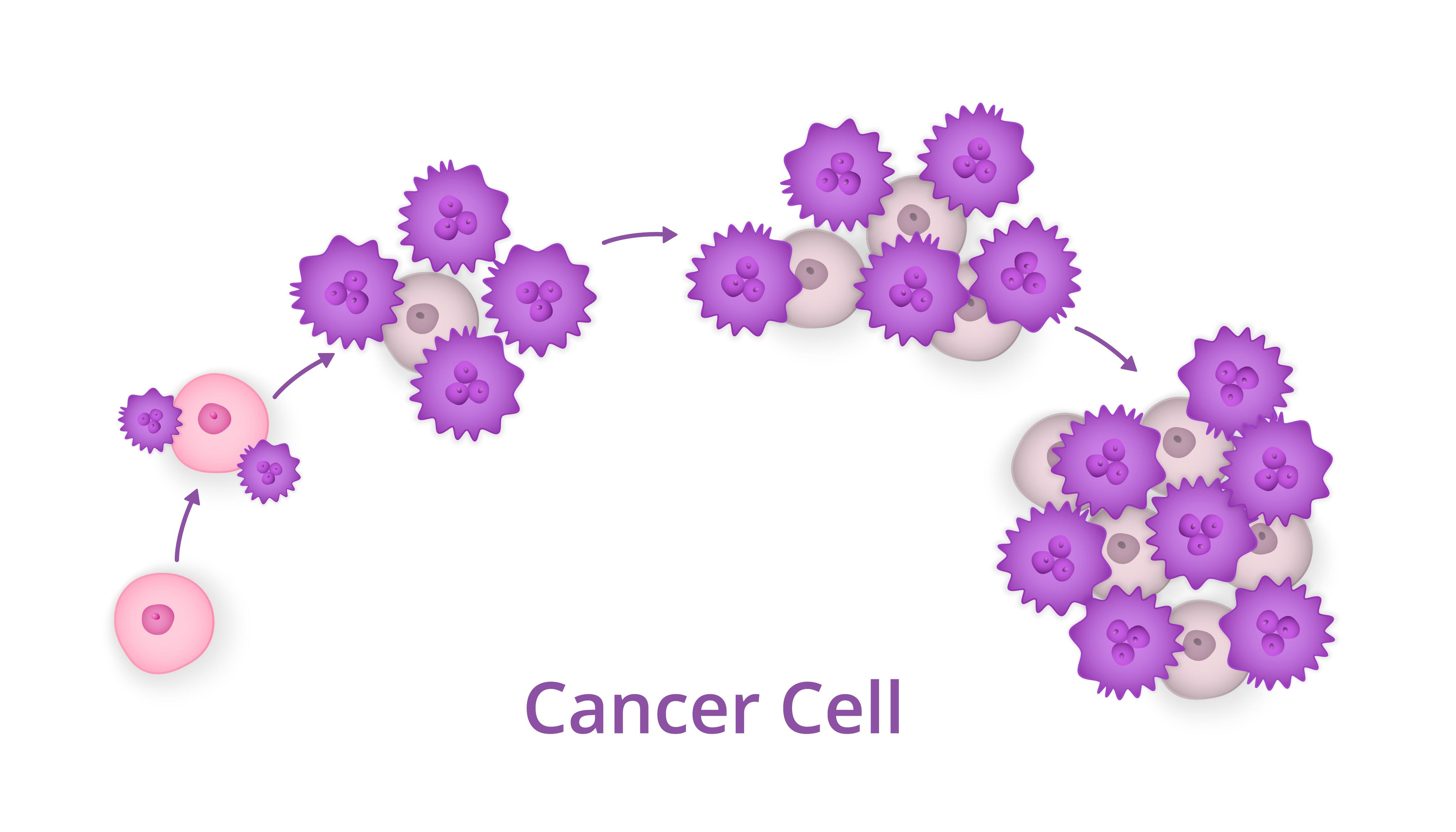
How does cancer grading work?
- Your prostate biopsy is used to get a grade group. This is used to measure how aggressive your prostate cancer is.
- To get this grade, your biopsy cells are first given a Gleason score.
- When healthy prostate cells turn into cancerous cells, they start to look different. This can be seen by looking at your biopsy samples under a microscope.

- The sample of cells are scored from three-to-five. This is based on how much the cancerous cells look like normal cells.
- Low grade cancerous cells look more like normal cells. The higher the score, the more abnormal the cells look.
Gleason score
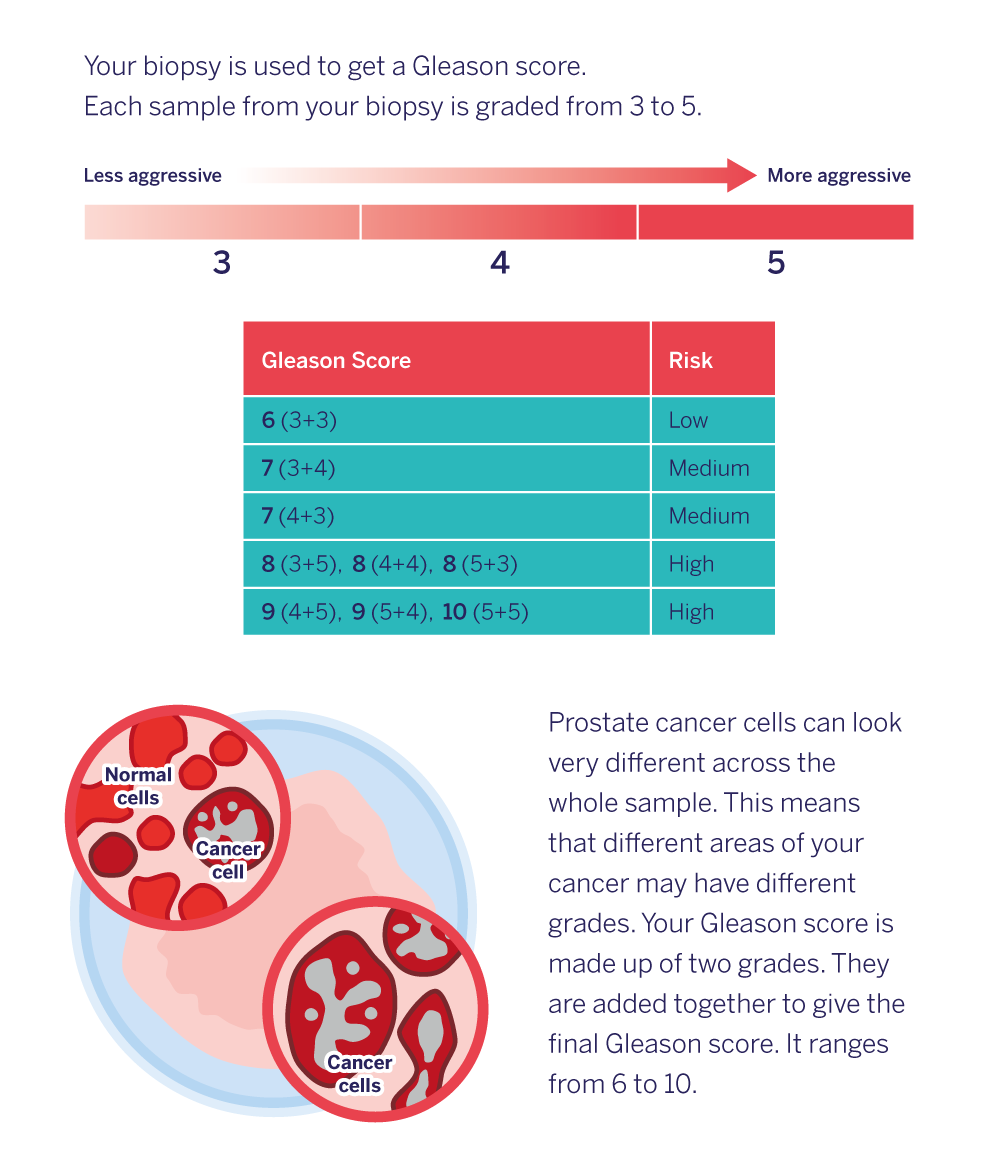
Grade Group
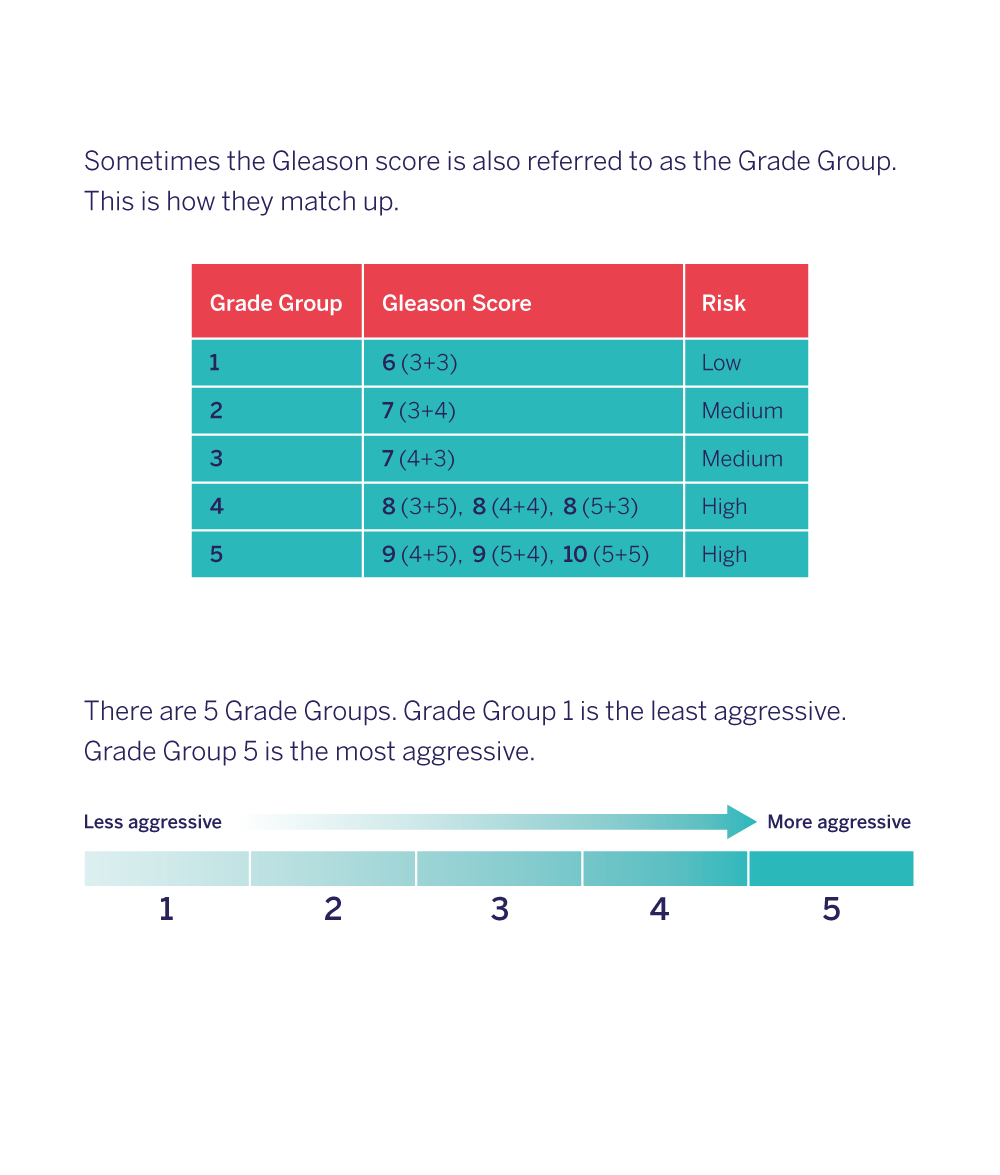
How does cancer staging work?
The type of staging that is most often used is the TNM staging system. This helps doctors to see:
- How big your cancer is
- Its position
- How far it has spread.
- T stands for tumour
- N stands for node
- M stands for metastases
Tumour
T describes the size of the tumour. It goes from T1 to T4.
T1 tumours
T1 tumours – this is where the cancer is confined within the prostate and can only be seen under a microscope. T1 tumours are divided into T1a, T1b and T1c.
- T1a: This means that cancer is only found in 5% or less of removed tissue.
T1b: Cancer cells are found in more than 5% of the removed tissue.
T1a and b are often only found after surgery for other reasons.
- T1c: This is often found after a prostate biopsy that was carried out after a raised PSA blood test.
T2 tumours
T2 tumours – this is where the cancer is confined within the prostate.
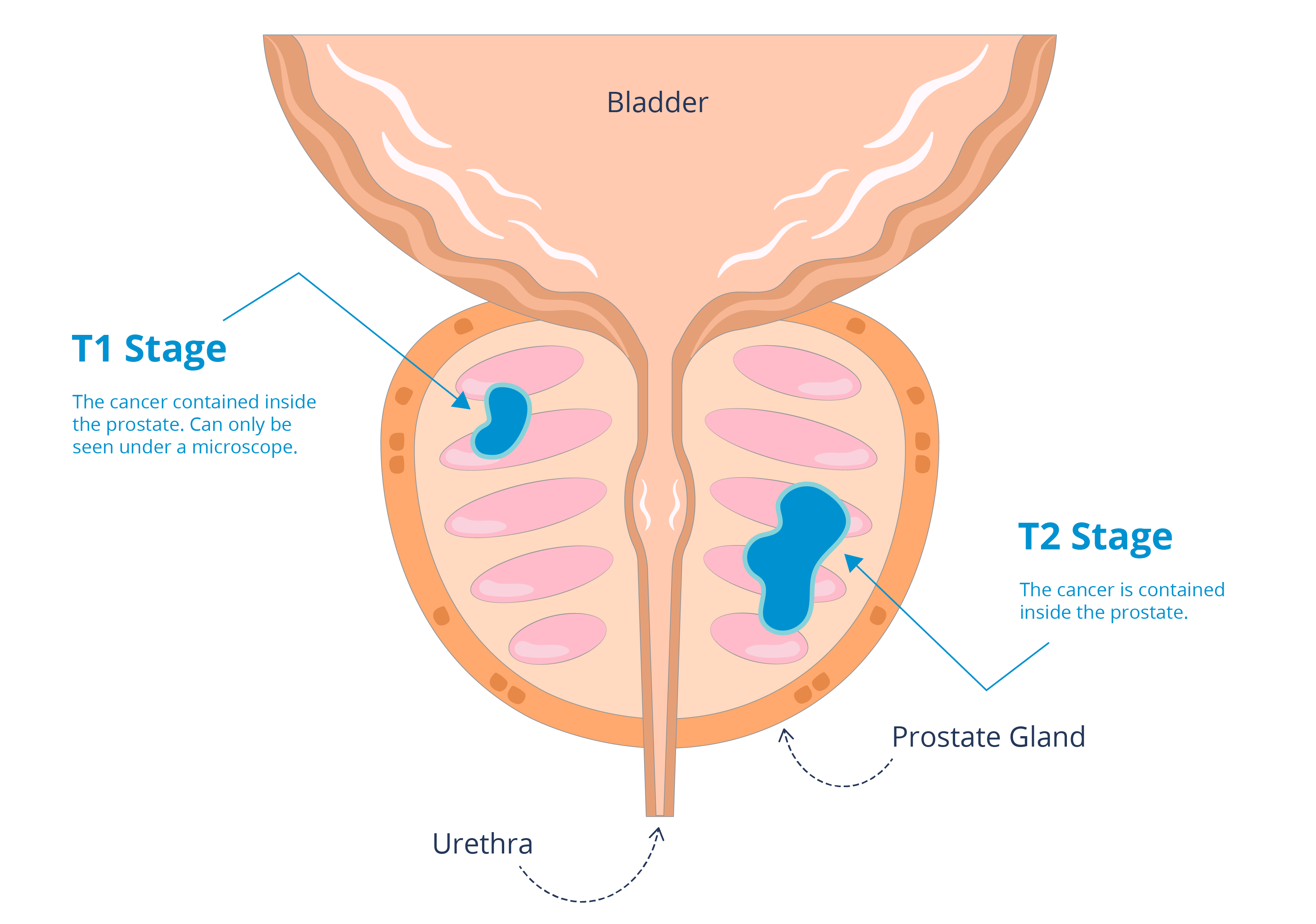
T3 tumours
T3 tumours – this is where the cancer has broken through the covering of the prostate. T3 tumours are divided into T3a and T3b. 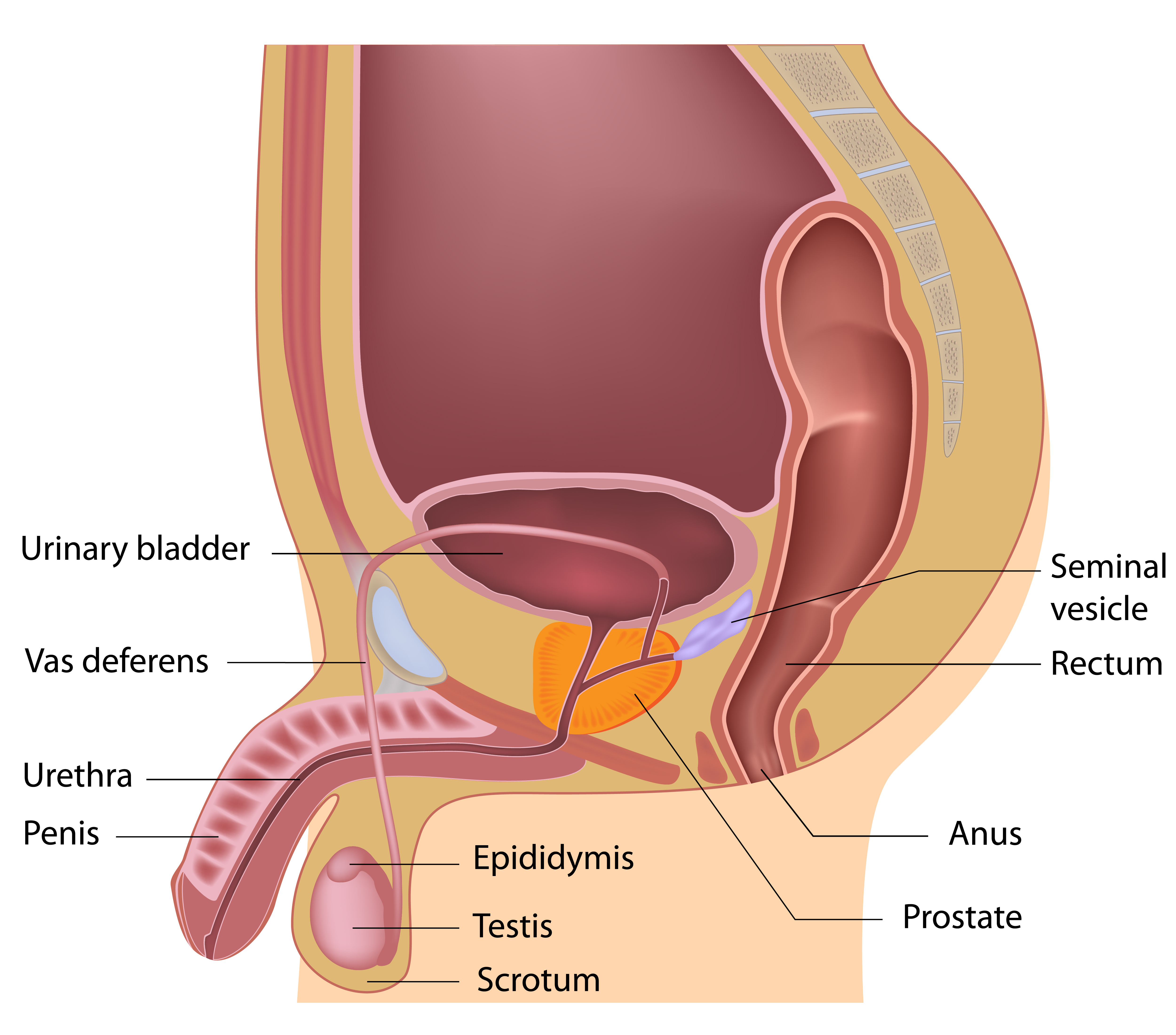
- T3a: The cancer has broken through the covering of the prostate.
- T3b: The cancer has spread to the seminal vesicles. They produce most of the fluid contained in your semen.
T4 tumours
T4 tumours – this is where the cancer has spread into tissue that is close to the prostate. For example, the bladder, back passage (rectum) or wall of your pelvis.
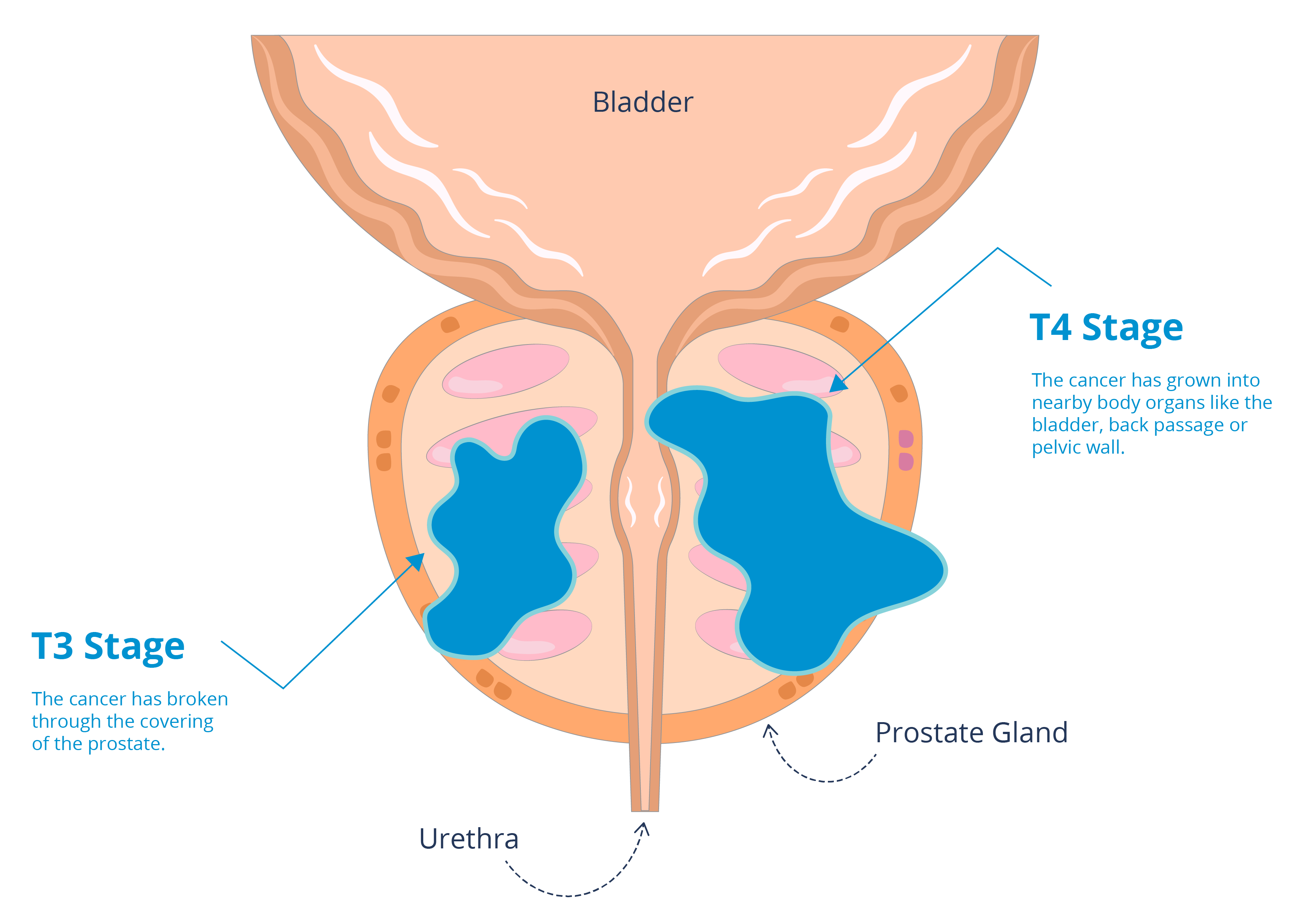
Node
This tells you whether the cancer has spread to the lymph nodes. Lymph nodes are part of your immune system.
- N0 means that the cancer has not spread to nearby lymph nodes.
- N1 means that there are cancer cells in the lymph nodes near to your prostate.
Metastases
This tells you whether your prostate cancer has spread to distant areas outside of your pelvis. It is divided into M0 and M1a M1b and M1c.
- M0 means that your cancer has not spread to more distant parts of your body.
- M1 means that your cancer has spread to more distant parts of your body. This is then divided into:
- M1a – the cancer has spread to lymph nodes outside the pelvis.
- M1b – the cancer has spread to your bones.
- M1c – the cancer has spread to other parts of your body, for example, your lungs.
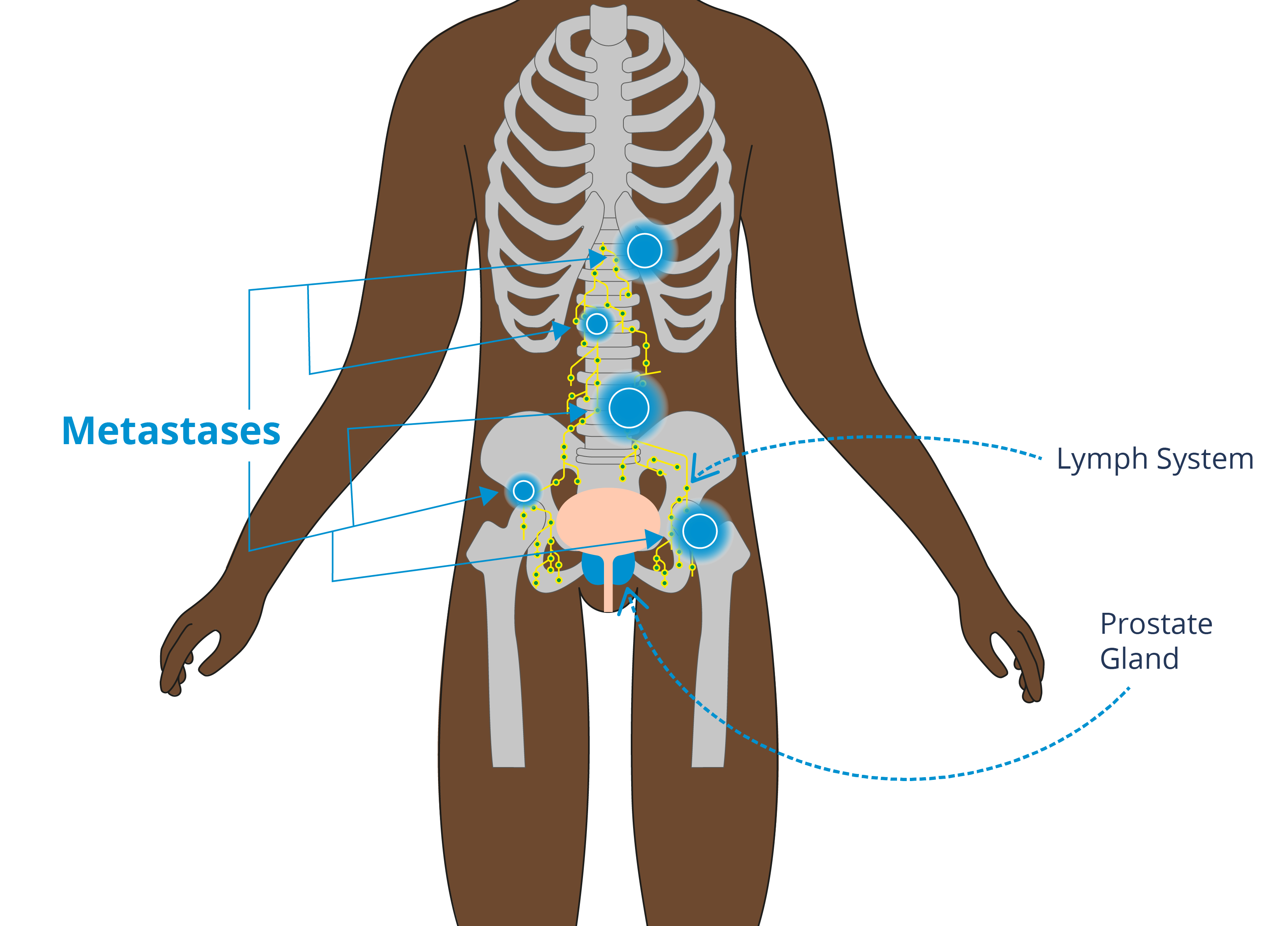
You may hear your doctor talking about your risk group. They use this to help them decide what treatment is best for you.
This is only if your cancer is:
Still inside your prostate (localised)
or
- Has spread just outside your prostate (locally advanced).
Your doctor will use a system called the Cambridge Prognostic Group (CPG) to calculate your risk. It divides cancer into five risk groups.
To get your risk group they need to look at your:
- Grade group or Gleason score
- PSA level – measured in nanograms per millilitre (ng/ml)
- Tumour stage (T stage).
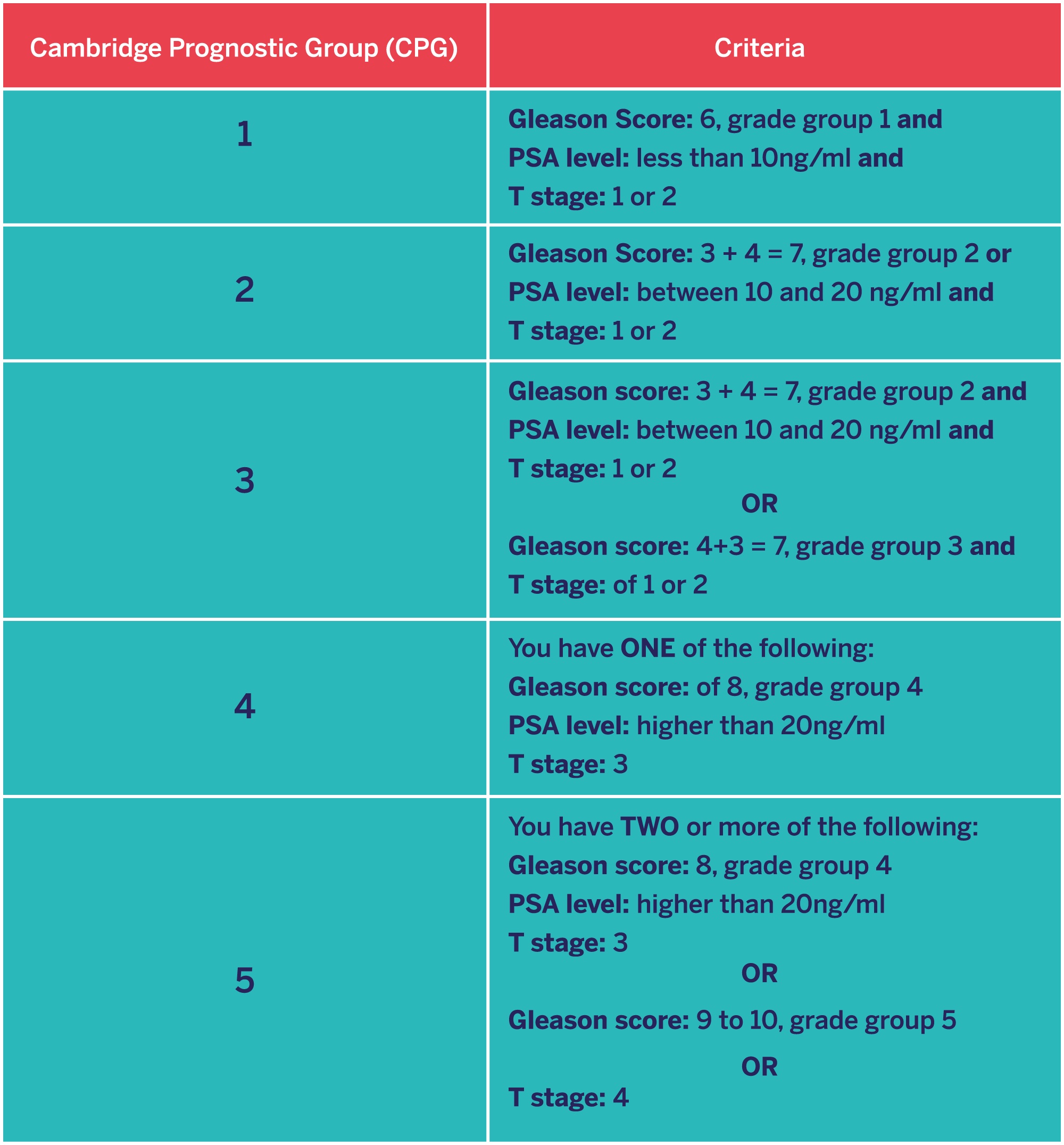
Prostate cancer metastases are small ‘seeds’ of your prostate cancer (the primary cancer) that have spread to other parts of the body.
In prostate cancer, the most common areas of metastases are the lymph nodes and the bones. It can also spread to other parts of your body, e.g. the lungs.
It is still known as prostate cancer wherever it is in the body.
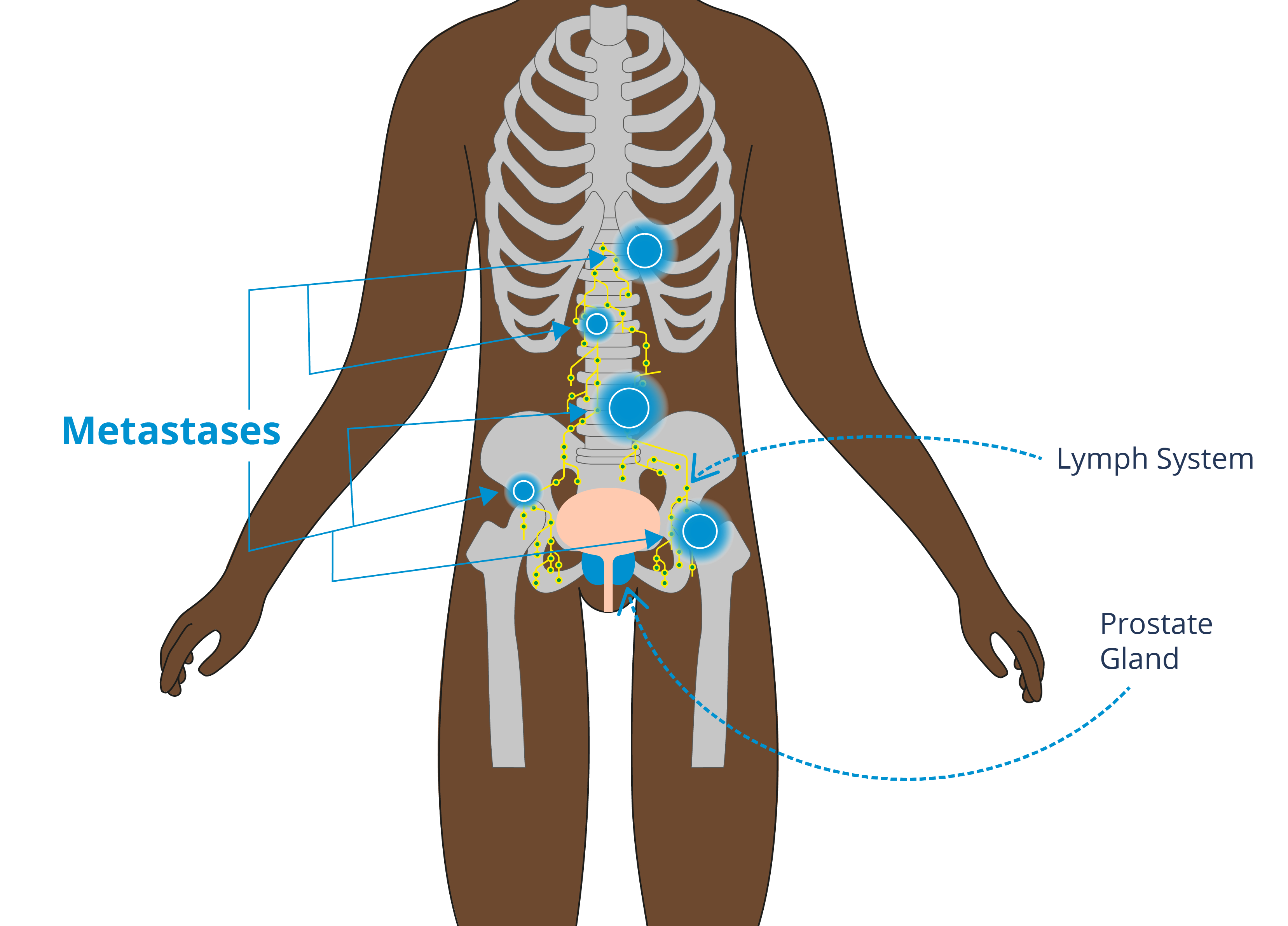
What are lymph nodes?
Lymph nodes (glands) are part of the immune system. They are small bean-shaped nodules that contain special cells called lymphocytes. These help to fight infection.
About this information
- This information was updated in May 2024. Date of next review: October 2026.
- References and bibliography available on request.
- If you want to reproduce this content, please see our Reproducing Our Content page.
Try our testing and diagnosis tool
Did you know we had a testing and diagnosis tool? Visit the tool to learn more about the tests and scans used to diagnose prostate cancer.
Explore your treatment options
Our treatment tool helps you to understand your treatment choice, compare these treatments, find out more about any treatment, discover what might happen if the cancer keeps growing after treatment.
